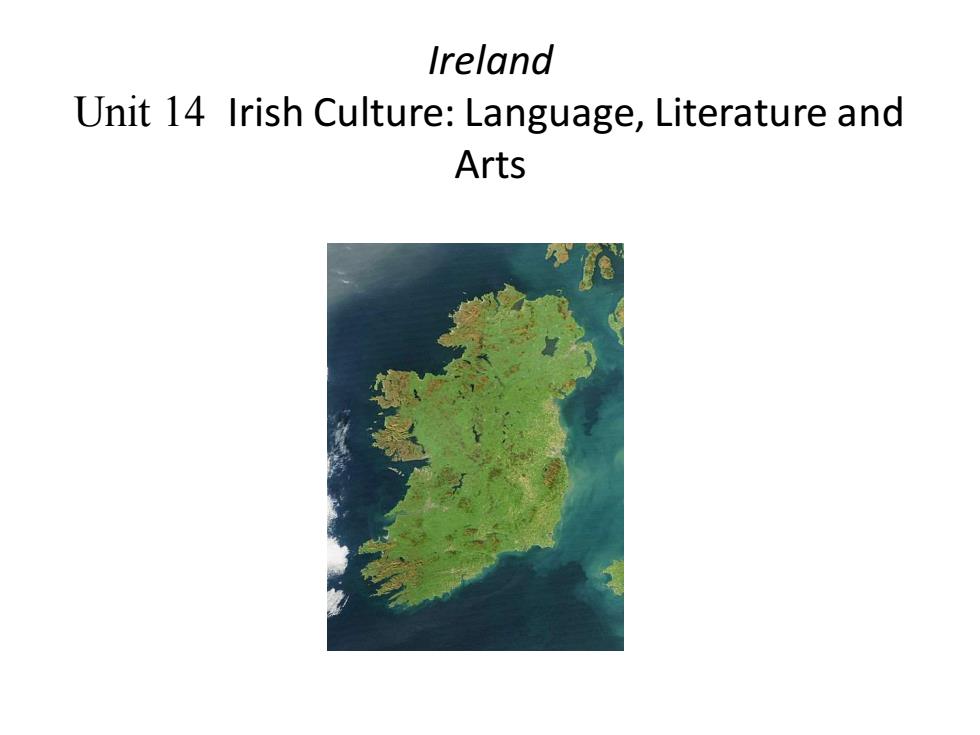
Ireland Unit 14 Irish Culture:Language,Literature and Arts
Ireland Unit 14 Irish Culture: Language, Literature and Arts

Quiz Give the English and a brief explanation for the following: 1.爱尔兰英语 2.盖尔语 3.大河舞 4.爱尔兰式曲棍球 5.英雄传奇/萨迦 6.诺贝尔文学奖获得者
Quiz Give the English and a brief explanation for the following: 1. 爱尔兰英语 2. 盖尔语 3. 大河舞 4. 爱尔兰式曲棍球 5. 英雄传奇/萨迦 6. 诺贝尔文学奖获得者
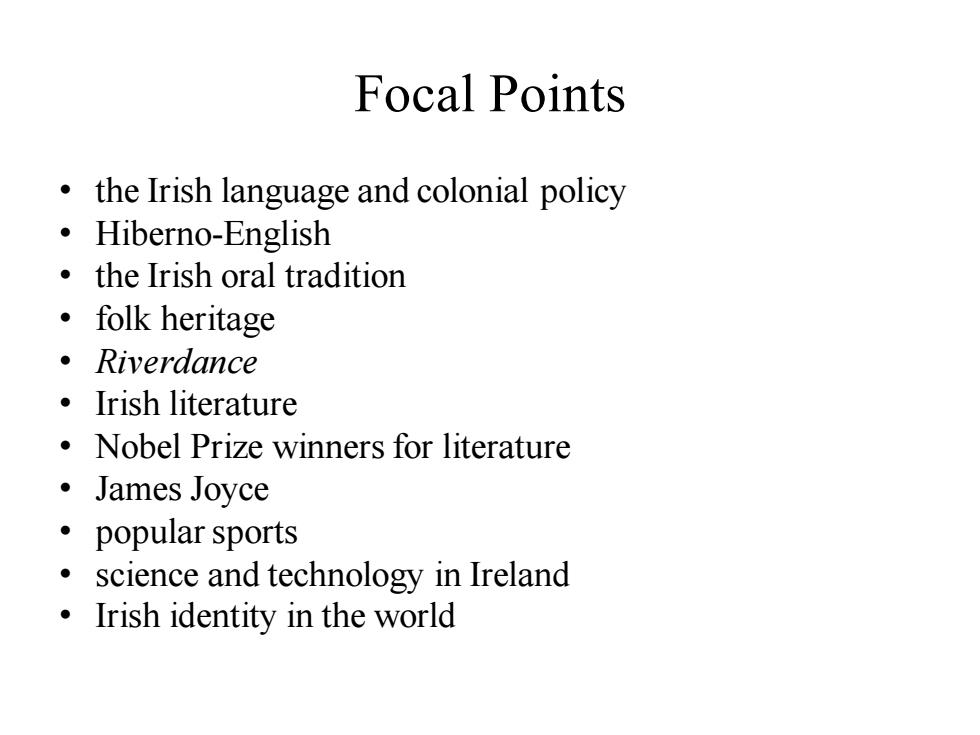
Focal Points the Irish language and colonial policy ·Hiberno-English the Irish oral tradition ·folk heritage ·Riverdance ·Irish literature Nobel Prize winners for literature ·James Joyce ·popular sports science and technology in Ireland Irish identity in the world
Focal Points • the Irish language and colonial policy • Hiberno-English • the Irish oral tradition • folk heritage • Riverdance • Irish literature • Nobel Prize winners for literature • James Joyce • popular sports • science and technology in Ireland • Irish identity in the world
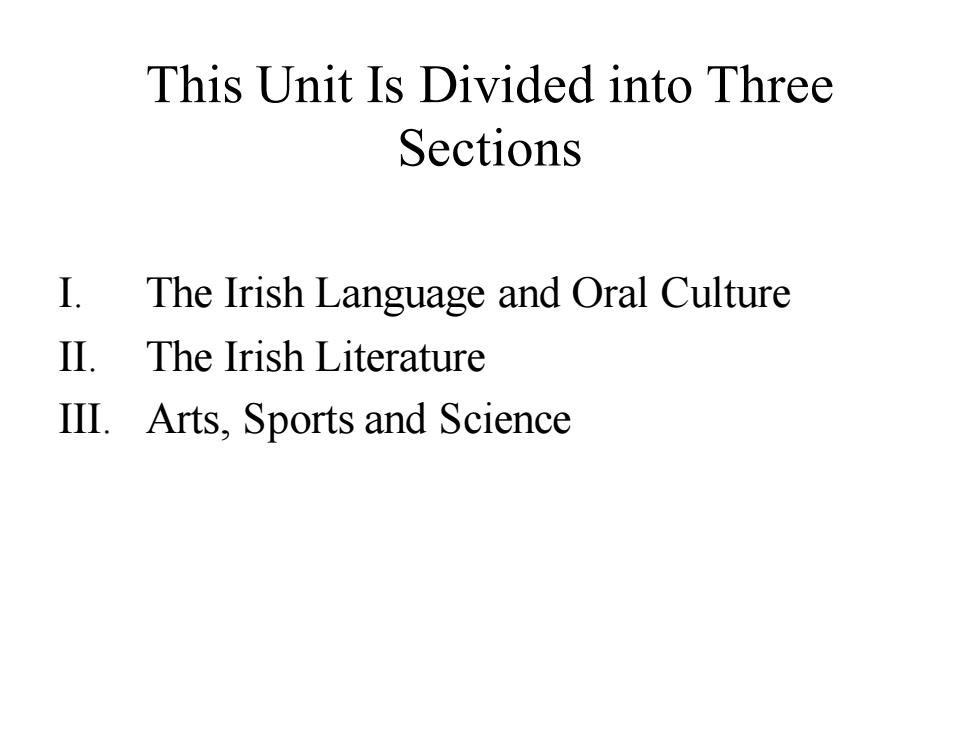
This Unit Is Divided into Three Sections I.The Irish Language and Oral Culture Ⅱ. The Irish Literature III.Arts,Sports and Science
This Unit Is Divided into Three Sections I. The Irish Language and Oral Culture II. The Irish Literature III. Arts, Sports and Science

I.The Irish Language and Oral Culture Traditionally,the Irish people spoke their own language,called Irish or Gaelic. Gaelic is a very ancient language with a rich oral culture. English became the dominant language during the British colonization. It has evolved into Hiberno-English,a version of standard English spoken universally in Ireland today. A self-conscious attempt has been made to revive the use of the Irish language in the Republic of Ireland
I. The Irish Language and Oral Culture • Traditionally, the Irish people spoke their own language, called Irish or Gaelic. • Gaelic is a very ancient language with a rich oral culture. • English became the dominant language during the British colonization. • It has evolved into Hiberno-English, a version of standard English spoken universally in Ireland today. • A self-conscious attempt has been made to revive the use of the Irish language in the Republic of Ireland
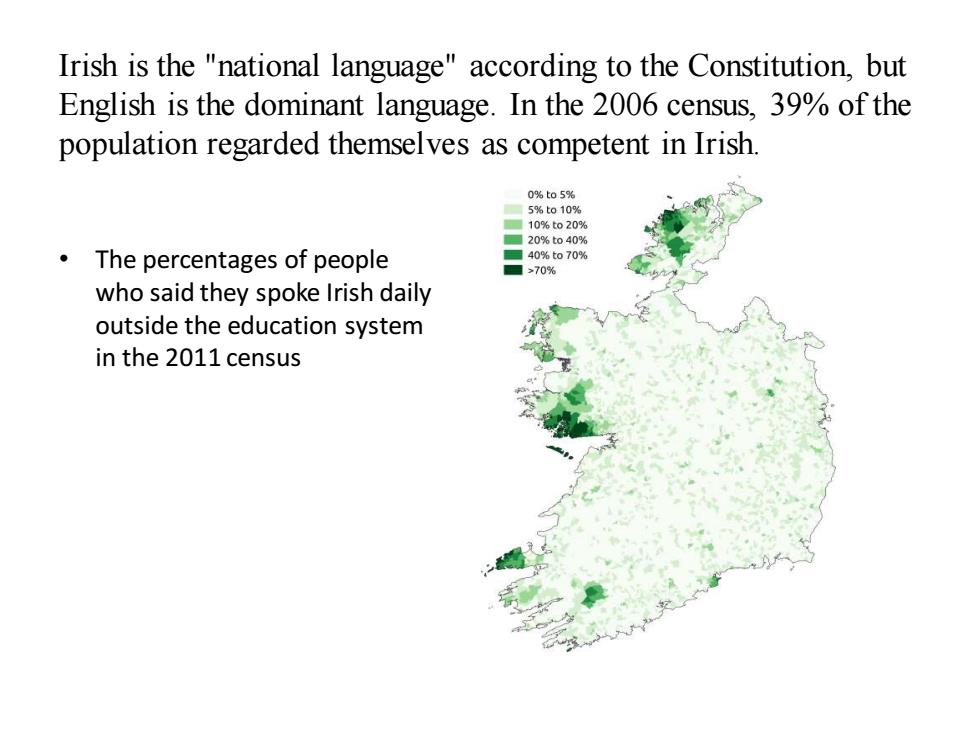
Irish is the "national language"according to the Constitution,but English is the dominant language.In the 2006 census,39%of the population regarded themselves as competent in Irish. 0%to5% 5%t010% 109%t020% ☐20%to40% The percentages of people ■40%t070% ■>70% who said they spoke Irish daily outside the education system in the 2011 census
Irish is the "national language" according to the Constitution, but English is the dominant language. In the 2006 census, 39% of the population regarded themselves as competent in Irish. • The percentages of people who said they spoke Irish daily outside the education system in the 2011 census

Oral tradition and oral lore is cultural material and tradition transmitted orally from one generation to another.The messages or testimony are verbally transmitted in speech or song and may take the form of folktales,sayings,ballads,songs,or chants. Oral culture in the form of story-telling
Oral tradition and oral lore is cultural material and tradition transmitted orally from one generation to another. The messages or testimony are verbally transmitted in speech or song and may take the form of folktales, sayings, ballads, songs, or chants. • Oral culture in the form of story-telling
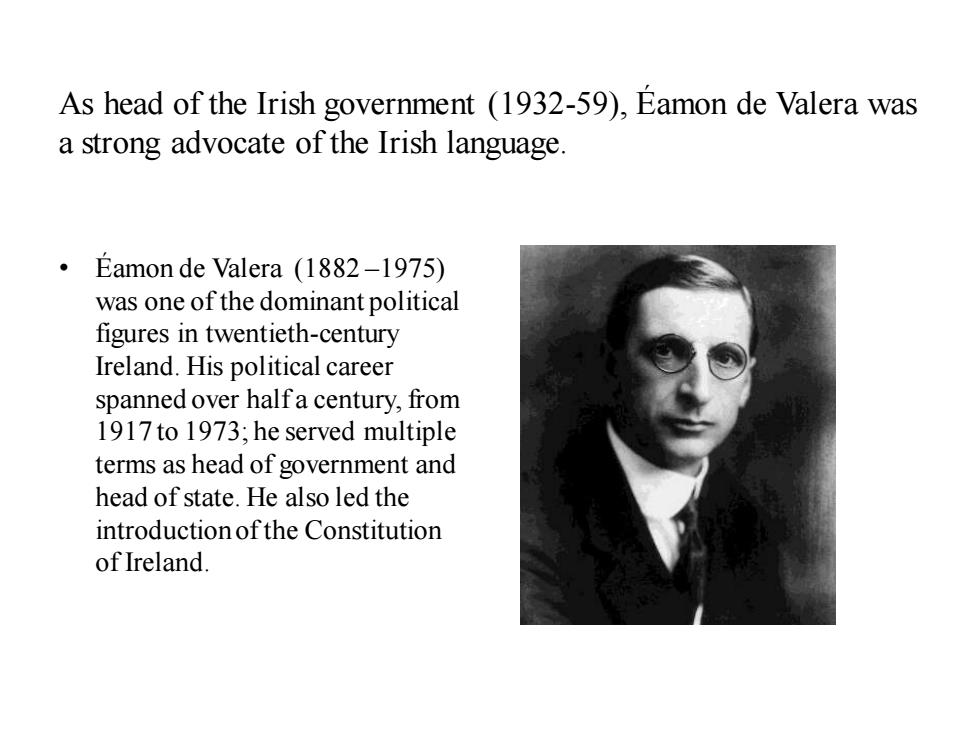
As head of the Irish government (1932-59),Eamon de Valera was a strong advocate of the Irish language. Eamon de Valera (1882-1975) was one of the dominant political figures in twentieth-century Ireland.His political career spanned over halfa century,from 1917 to 1973;he served multiple terms as head of government and head of state.He also led the introduction of the Constitution of Ireland
As head of the Irish government (1932-59), Éamon de Valera was a strong advocate of the Irish language. • Éamon de Valera (1882 –1975) was one of the dominant political figures in twentieth-century Ireland. His political career spanned over half a century, from 1917 to 1973; he served multiple terms as head of government and head of state. He also led the introduction of the Constitution of Ireland
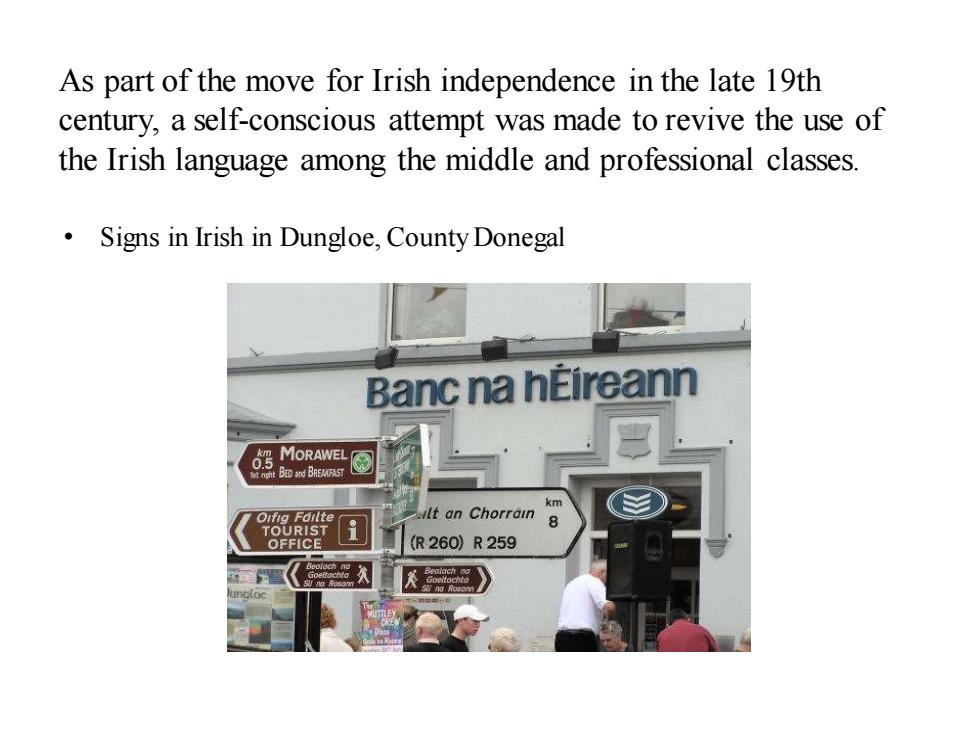
As part of the move for Irish independence in the late 19th century,a self-conscious attempt was made to revive the use of the Irish language among the middle and professional classes. Signs in Irish in Dungloe,County Donegal Banc na hEireann km ilt an Chorrain 8 R260)R259 】
As part of the move for Irish independence in the late 19th century, a self-conscious attempt was made to revive the use of the Irish language among the middle and professional classes. • Signs in Irish in Dungloe, County Donegal

Under Eamon De Valera's government (1932-1959),the school system was made to teach the Irish language to all Irish children from the age of four until they left school at fifteen. Traffic sign,meaning"Give Way"or"Yield",in County Waterford GEILL SLi
Under Eamon De Valera’s government (1932-1959), the school system was made to teach the Irish language to all Irish children from the age of four until they left school at fifteen. • Traffic sign, meaning "Give Way" or "Yield", in County Waterford